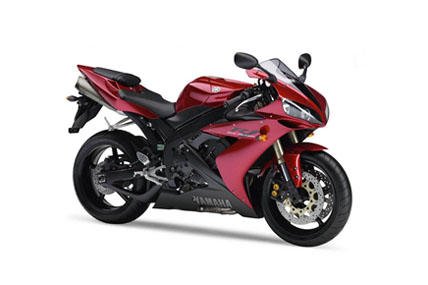And Other May Driving Tips
If you're shopping for a new motorcycle, look for one with antilock brakes. Research by the Insurance Institute for Highway Safety found antilock brakes reduce motorcycle crashes, including fatal ones, by more than a third.
To further cut your chances for an accident, follow these guidelines.
If you're a biker:
- Always wear protective gear, including a helmet that is compliant with Department of Transportation safety standards. Look for the department label on the back of the helmet.
- Avoid riding in bad weather.
- Position your motorcycle so you will be out of a driver's blind spot.
- Use turn signals for every turn or lane change.
If you're a driver:
- Allow greater following distance behind a motorcycle. As a rule of thumb, watch the motorcycle pass an object and allow at least three or four seconds before you pass that same object.
- Be cautious at intersections. Most crashes occur when a driver doesn't see a motorcyclist and turns left in front of a motorcycle.
- Give a motorcycle the full lane width. Never try to share a lane.
Safe Summer Driving
May brings proms, high school graduations and an early start to a carefree summer. It's no coincidence that May is also Youth Traffic Safety Month. Traffic crashes are the leading cause of death among teenagers, according to the National Highway Traffic Safety Administration.
With summer approaching, take this time to set the ground rules for drivers of all ages in your home.
- Always wear a seat belt. Make sure passengers buckle up, too.
- Don't text or talk on the phone while driving.
- Before leaving home, preset electronic music players and finish your personal grooming. That includes applying makeup and shaving.
- Plan the route you're going to take before you get in the car.
- Never ride with anyone who is under the influence of drugs or alcohol.
The USAA Educational Foundation's K.E.Y.S. (Keeping Every Youth Safe) program offers more guidance for parents of teenage drivers.
Monthly Reminder: Change Your Oil — But Not Too Often
You've probably heard that you should change your oil every several months or every 3,000 miles, but that rule is fading as the quality of engines and oil improve. Many late-model cars can go 5,000 miles or six months or more before an oil change is needed. Check your car owner's manual for specifics.
When you change your oil, also change the oil filter. These devices keep dirt and debris from entering and damaging fuel injectors and carburetors. After a while, fuel filters may clog, which affects your engine's performance and causes your car to burn gas faster.










